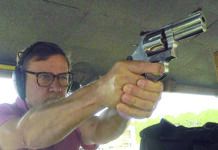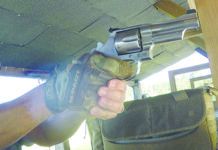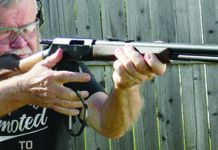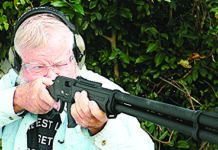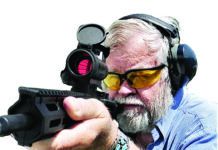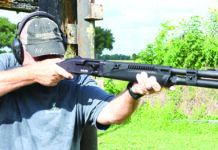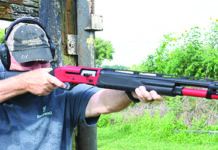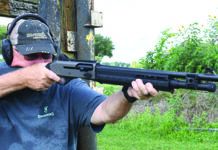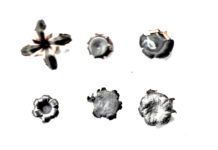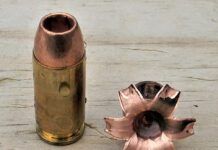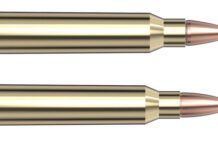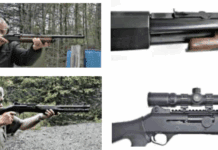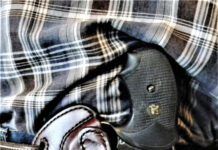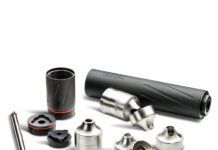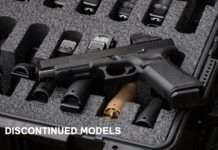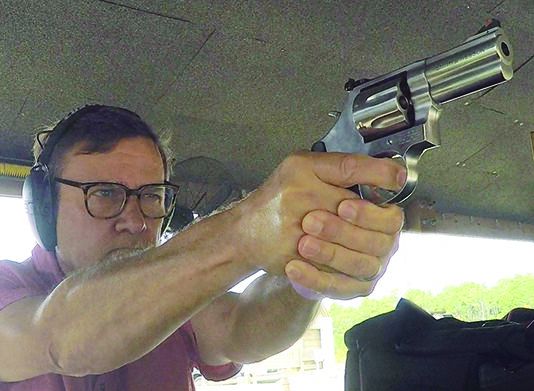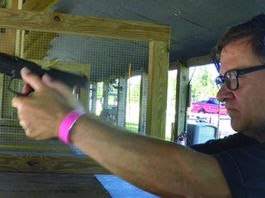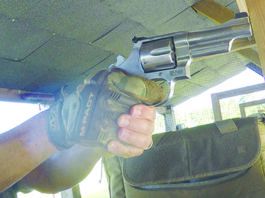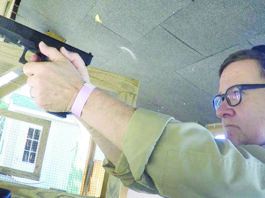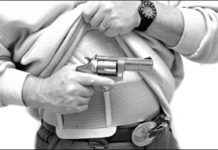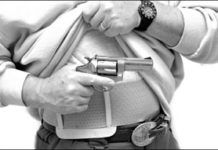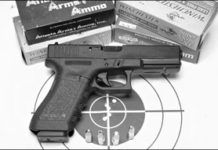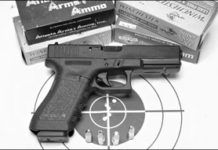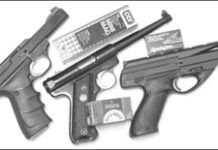Heston’s Political Commandment: Thou Shalt Not Abridge Gun Rights
Gallup Poll: Public Believes Americans Have Right to Own Guns
Smith & Wesson Launches Training Program with 3point5.com
Burglary Victim Fights Back
Team Glock Earns Titles at US National Steel Championships
Supreme Court Gun-Ban Case Heard
.32-Caliber Wheelguns: Rugers SP101s Excel at Self-Defense
.32-Caliber Wheelguns: Rugers SP101s Excel at Self-Defense
Full-Time-Double-Action 9mms: We Like SIG Sauer, H&K, Glock
In this test we shot three double-action-only pistols designed for duty or personal self defense. Medium to large in size, they carry few levers, and this snag-free characteristic also makes them attractive for concealed carry. Two of the three guns, the $879 Heckler & Koch P2000 LEM V2 and Sig Sauer's $749 P250 Two-Tone, utilize a hammer and firing pin for ignition. The $599 Glock G17, arguably the gun that started the polymer DAO revolution, relies on the preparation and release of a striker to impact the primer. Despite any similarities between the guns, this test challenged us to master vastly different trigger techniques.
We began our tests from the 25-yard line supported by bench and sandbag. What better way to learn a trigger than limiting variables to grip, sight alignment, and a controlled press? We then added a second test. This would require landing rapid-fire hits on an 8.5-by-16-inch target from a distance of 5 yards, two shots at a time. Our shooter began each string of fire standing unsupported with a two-handed grip and sights on target but with finger off the trigger. We pasted a black 1-inch-wide dot in the center to provide a point of aim. Upon audible start signal from our CED electronic timer, we engaged the target as quickly as possible. Given that each stroke of the trigger both prepared and released the striking mechanism, we wanted to know how quickly and accurately we could land two hits on target one after another. We fired ten pairs and looked for a total of 20 hits on target. This test was performed twice. The second time we concentrated on applying what we learned from the first run. The rapid-fire test was performed firing one of our favorite practice rounds, Black Hills' 115-grain FMJ ammunition sold in blue 50-round boxes. From the benches we tried Winchester's new 105-grain jacketed softpoint Super Clean NT (nontoxic) ammunition; 124-grain full-metal-jacket rounds by Winchester USA, and 147-grain Subsonic jacketed hollow point Match rounds by Atlanta Arms and Ammo. Here is what we learned.
Full-Time-Double-Action 9mms: We Like SIG Sauer, H&K, Glock
In this test we shot three double-action-only pistols designed for duty or personal self defense. Medium to large in size, they carry few levers, and this snag-free characteristic also makes them attractive for concealed carry. Two of the three guns, the $879 Heckler & Koch P2000 LEM V2 and Sig Sauer's $749 P250 Two-Tone, utilize a hammer and firing pin for ignition. The $599 Glock G17, arguably the gun that started the polymer DAO revolution, relies on the preparation and release of a striker to impact the primer. Despite any similarities between the guns, this test challenged us to master vastly different trigger techniques.
We began our tests from the 25-yard line supported by bench and sandbag. What better way to learn a trigger than limiting variables to grip, sight alignment, and a controlled press? We then added a second test. This would require landing rapid-fire hits on an 8.5-by-16-inch target from a distance of 5 yards, two shots at a time. Our shooter began each string of fire standing unsupported with a two-handed grip and sights on target but with finger off the trigger. We pasted a black 1-inch-wide dot in the center to provide a point of aim. Upon audible start signal from our CED electronic timer, we engaged the target as quickly as possible. Given that each stroke of the trigger both prepared and released the striking mechanism, we wanted to know how quickly and accurately we could land two hits on target one after another. We fired ten pairs and looked for a total of 20 hits on target. This test was performed twice. The second time we concentrated on applying what we learned from the first run. The rapid-fire test was performed firing one of our favorite practice rounds, Black Hills' 115-grain FMJ ammunition sold in blue 50-round boxes. From the benches we tried Winchester's new 105-grain jacketed softpoint Super Clean NT (nontoxic) ammunition; 124-grain full-metal-jacket rounds by Winchester USA, and 147-grain Subsonic jacketed hollow point Match rounds by Atlanta Arms and Ammo. Here is what we learned.


